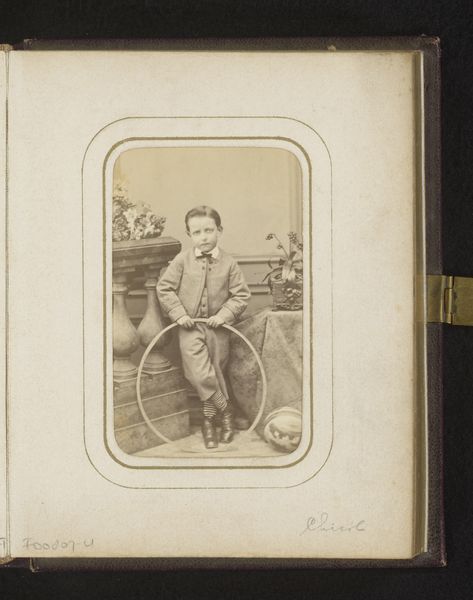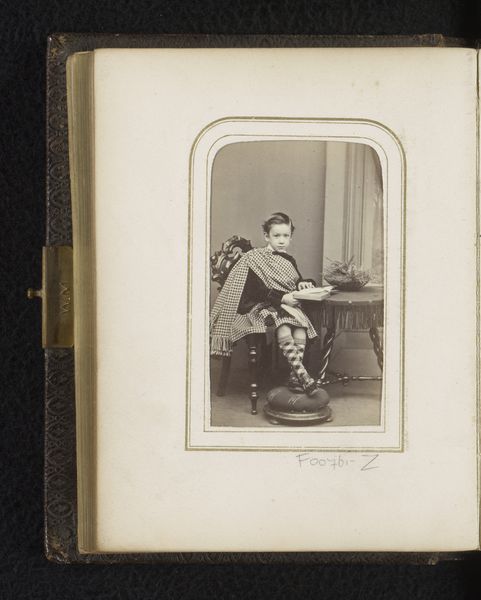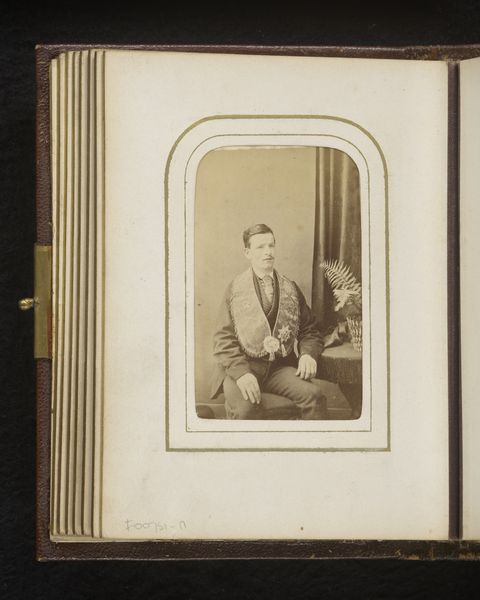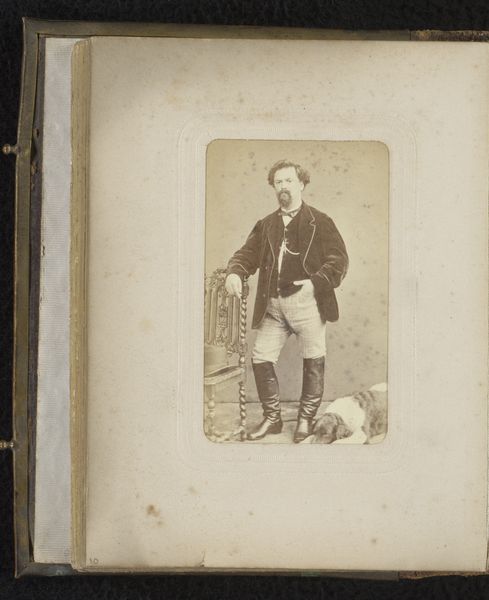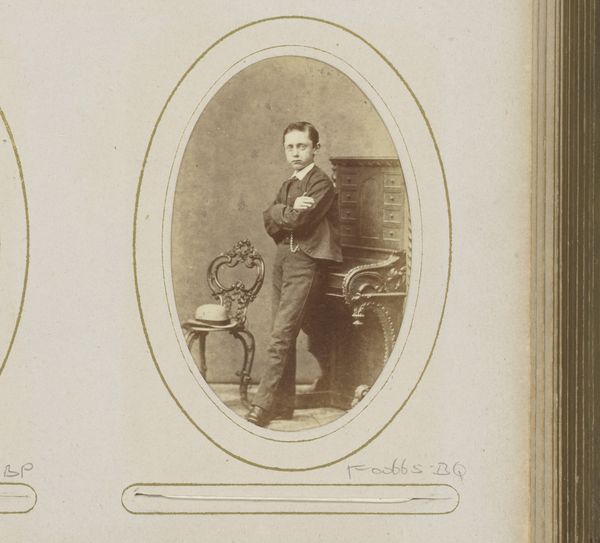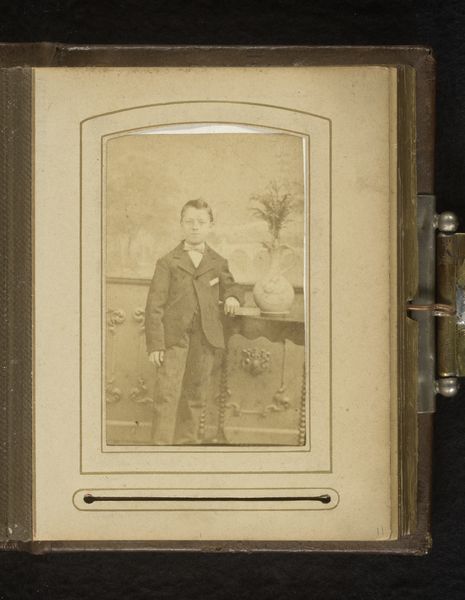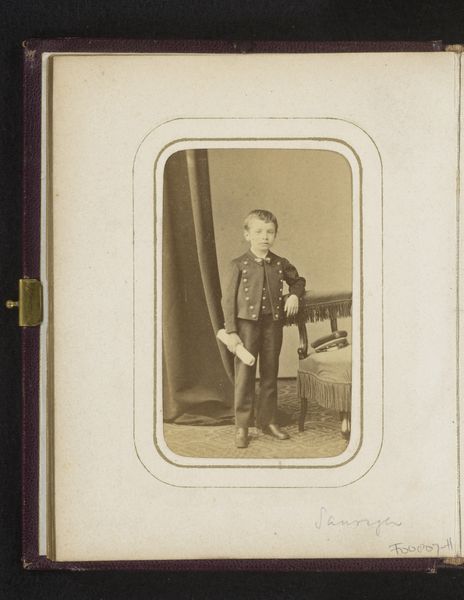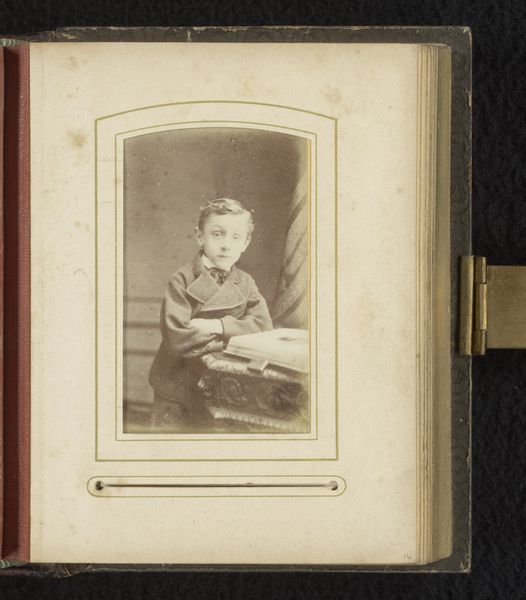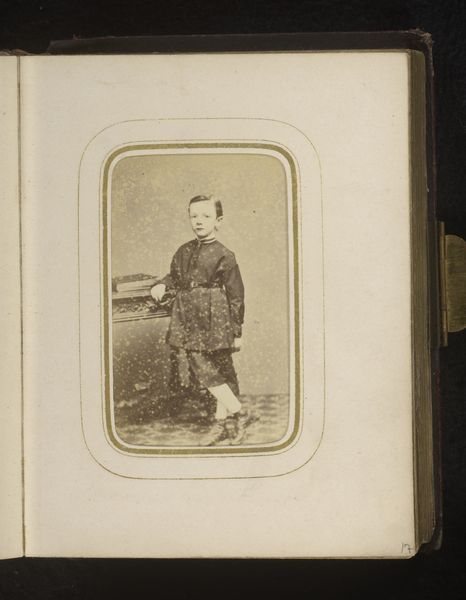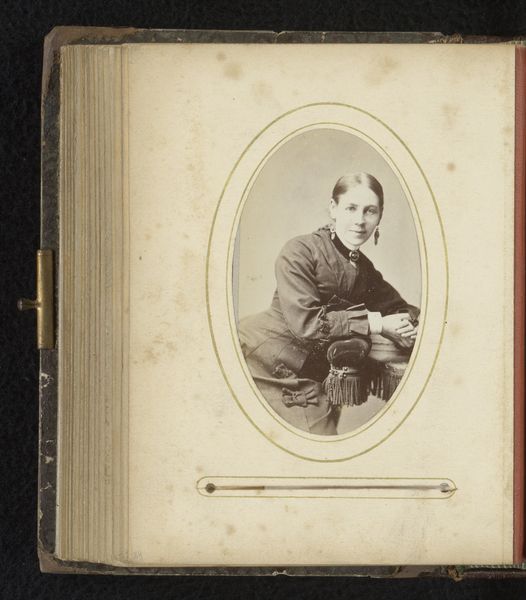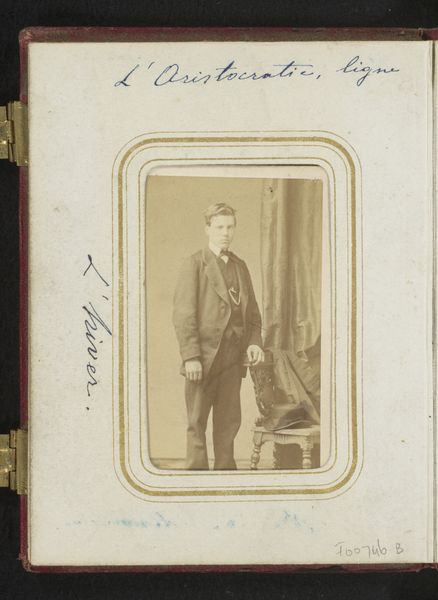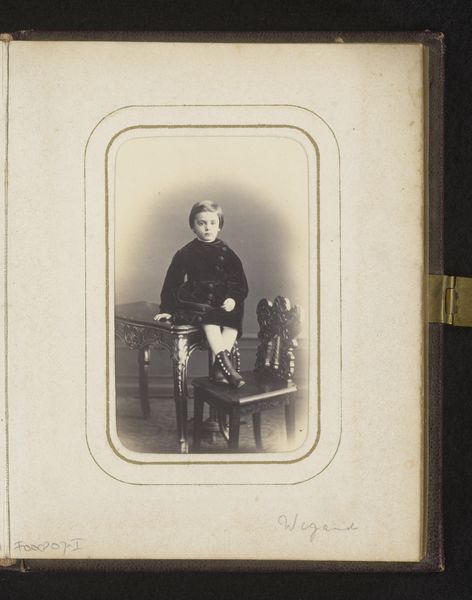
photography, gelatin-silver-print
#
portrait
#
photography
#
coloured pencil
#
gelatin-silver-print
#
genre-painting
Dimensions: height 84 mm, width 52 mm
Copyright: Rijks Museum: Open Domain
Curator: This gelatin-silver print, dating from 1860 to 1900, captures a "Portret van een zittende jongen," or Portrait of a Seated Boy, by A. Delamare & A. Raguet. Editor: The poor little chap! He looks rather forlorn, perched there. There's an incredible formality to the composition—from the fringed stool to the slightly-too-big boots, everything seems consciously arranged. I find myself wondering what the sitting felt like to him. Curator: It's a fascinating insight into the conventions of portraiture at the time, isn't it? It's interesting to view images of childhood as posed rather than candid glimpses. Photography became quite fashionable amongst middle-classes at the time. Editor: Yes, and think about the politics inherent in that accessibility. Photography, seemingly democratic in its early accessibility compared to painted portraits, still bore the mark of class and societal expectations. The very act of "sitting" for a photograph—the stillness demanded—speaks to a specific cultural and economic positioning. One almost feels the weight of expectation placed on him as the artists took his photograph! Curator: Absolutely, the symbolism of each element comes forward. But, oh, to be a child in those perfectly polished boots with those oversized features and long skinny pants. They would not let kids be kids at this time in our world! Editor: Agreed. The photograph offers us a glimpse into a carefully constructed world. The boy, however, retains a certain spark in his eye—a quiet rebellion, perhaps, against the rigid formality surrounding him. Curator: It makes me wonder how he is sitting now and whether he grew up well. Such lovely artists, though! A time capsule through images, don’t you think? Editor: Indeed. The picture freezes a moment—one seemingly staged—that opens up wider conversations about childhood, representation, and the gaze. Thanks for diving into those ideas!
Comments
No comments
Be the first to comment and join the conversation on the ultimate creative platform.
